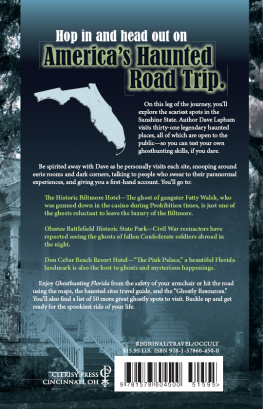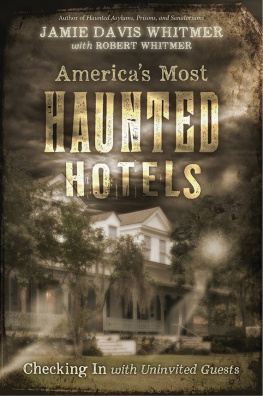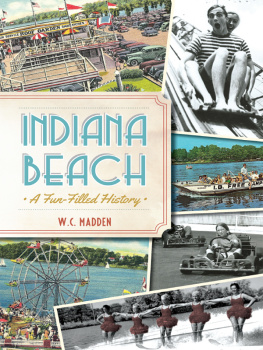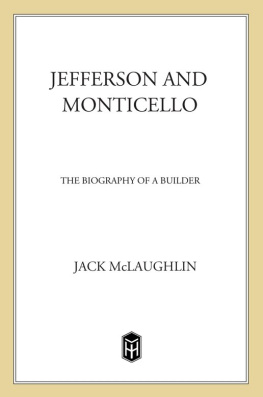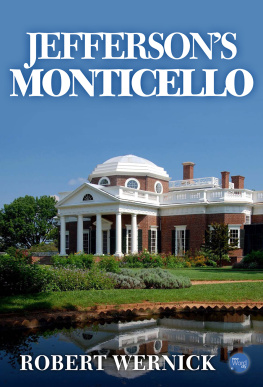Published by Haunted America
A Division of The History Press
Charleston, SC 29403
www.historypress.net
Copyright 2011 by Betty Davis and the Big Bend Ghost Trackers
All rights reserved
All photos were taken by Kenneth A. Davis.
First published 2011
e-book edition 2013
Manufactured in the United States
ISBN 978.1.62584.155.1
Davis, Betty (Betty Gilbert)
Haunted Monticello, Florida / Betty Davis and the Big Bend Ghost Trackers.
p. cm.
print edition ISBN 978-1-60949-311-0
1. Ghosts--Florida--Monticello. 2. Haunted places--Florida--Monticello. I. Big Bend Ghost Trackers (Team) II. Title.
BF1472.U6D37 2011
133.10975987--dc22
2011015493
Notice: The information in this book is true and complete to the best of our knowledge. It is offered without guarantee on the part of the authors or The History Press. The authors and The History Press disclaim all liability in connection with the use of this book.
All rights reserved. No part of this book may be reproduced or transmitted in any form whatsoever without prior written permission from the publisher except in the case of brief quotations embodied in critical articles and reviews.
ACKNOWLEDGEMENTS
As director-founder of Big Bend Ghost Trackers, I began my ghostly journey in Monticello in 2000. At a time before the many ghost-hunting reality television shows, it was not politically correct or always accepted to speak about the paranormal.
The citizens of Monticello welcomed me and my team with what the city is best known for: southern hospitality. From the mayor to the former sheriff, a congressman, attorneys, innkeepers, farmers, business and homeowners, rich or poor, educated or schooled from lifes vast experiences, they all had credible and believable stories to tell of ghostly encounters.
Most importantly, I want to thank our spouses for all of their love and patience and for supporting us in our endeavor to write this book and realize a dream. This would not have been possible without them.
Michelle Cerdan, your team enthusiasm and group dedication makes you a valuable asset. Your research skills were invaluable to the writing of this book. You were there in the beginning and helped make Big Bend Ghost Trackers become what it is today. As the teams lead paranormal investigator, your keen knowledge is a major contributor to our many successful investigations.
Melanie Davis, your devotion to Historic Monticello Ghost Tours continues to make our tour north Floridas number one ghost tour. Your ability to capture voices from the grave is phenomenal, allowing our team to further validate the question: Do our spirits live on after our earth bodies are no more?
Christine McVicker, your team loyalty and tireless efforts, as well as your many hours of research and writing, have made this a reality. You are an up-and-coming professional psychic medium with incredible talent, and your connection to the afterlife provides a valuable tool for our team and a valuable service for those who want one last time.
To the MonticelloJefferson County Chamber of Commerce, Fran Hunt of the Monticello News, Pat Inmon and Jackie Andris, your support of Big Bend Ghost Trackers and Historic Monticello Ghost Tours is invaluable.
THE HISTORY OF JEFFERSON COUNTY
Jefferson County is situated in the heart of the Florida Panhandle, with its rolling hills and stately oaks draped in wispy Spanish moss. To the first-time visitor, the fictional town of Mayberry comes to mind. Youngsters walking down the red clay roads with fishing poles, lemonade stands set up in front yards, picnics in the park, church cakewalks and potluck suppers bring to mind a gentler time of a bygone era.
Shopkeepers and evening strollers kindly and willingly give strangers directions, recommend an eatery or assist with a flat tire. Its a place where neighbors have been known to borrow a cup of sugar from one another, bring a hot meal during times of sickness and sorrow and rejoice with each new birth. This is southern hospitality at its best. This is Monticello, Jefferson County, Florida.
Jefferson County is the only county in the state of Florida that extends all the way from Georgia on the north to the Gulf of Mexico on the south. Known as the Keystone County, it is located about midway between Jacksonville, Floridas northernmost Atlantic port, and Pensacola, one of its largest Gulf ports.
Monticello, the county seat, is located just twenty-three miles east of Floridas capital, Tallahassee, and situated on U.S. Highways 19 and 90 directly off Interstate Highway 10.
With a population of just under fourteen thousand, Jefferson County is the home of a diverse population, vibrant culture and varying socioeconomic classes. Most of the downtown commercial buildings, in the Monticello Historic District, date from the last quarter of the nineteenth century. Listed on the National Register of Historic Places, Monticello also contains more than forty buildings dating from that century. These structures reflect the typical development of a north Florida town of the period. Unlike other Florida towns of the same era, nineteenth-century Monticello remains largely intact.
Jefferson County was founded in January 1827 and became the thirteenth county in territorial Florida. The county was named in honor of Thomas Jefferson, the third president of the United States of America, who served from 1801 to 1809. This happened eighteen years before Florida was admitted into the Union, on March 3, 1845, under the presidential administration of John Tyler. Florida entered into the statehood as the twenty-seventh state.
Six months before the founding of Jefferson County, on July 4, 1826, Thomas Jefferson died at his famous Virginia home, Monticello (pronounced mont-i-chello). The exact source of the name Monticello still remains a mystery today, though. Perhaps it was just providence when, a century later, descendants of Thomas Jefferson would be residents of the town for many years.
Monticello is located northeast of the countys center, at one of the highest points in western Florida, sitting at 236 feet above sea level. After Jefferson County was founded, five commissioners were called on to select the location for a permanent seat of justice. On August 15, 1827, the county seat was selected and named Monticello, likely in honor of Thomas Jeffersons famous home. Governmental offices were established, land was surveyed and lots for homes and businesses were sold. During the 1830s and 1840s, Monticello developed into the social, governmental and economic center of Jefferson County.
Jefferson County and Monticello have, over the years, had their share of trials and tribulationssuch as the years of the Seminole Indian Wars, beginning in 1836, which brought death and destruction through attacks by hostile marauders on defenseless homes. The Civil War had brave boys in gray defending the state against the incursions of the enemy and fighting in all of the great battles of the war east of the Mississippi, under General Robert E. Lee. Following the war, the turbulent days of Reconstruction, the arrival of the carpetbaggers and postCivil War fires destroyed much of the downtown area. The late spring cold wave of 1881 killed most of the farmers crops. The yellow fever epidemic of 1888 left no family unaffected. But Jefferson County and Monticello prevailed.




